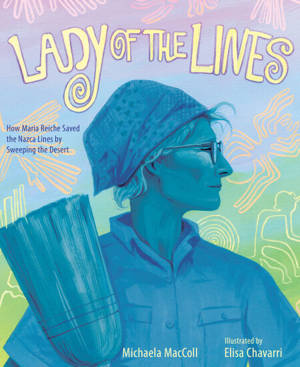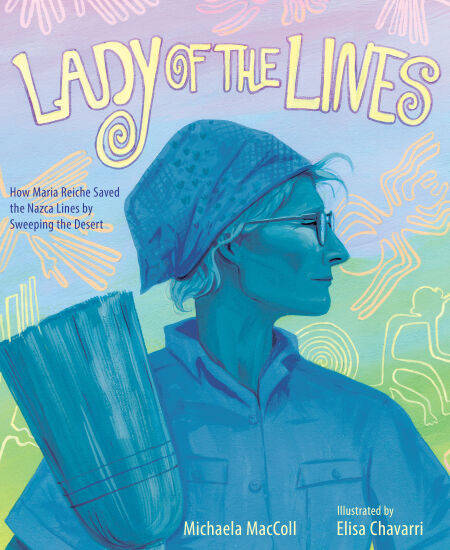
- Afhalen na 1 uur in een winkel met voorraad
- Gratis thuislevering in België vanaf € 30
- Ruim aanbod met 7 miljoen producten
- Afhalen na 1 uur in een winkel met voorraad
- Gratis thuislevering in België vanaf € 30
- Ruim aanbod met 7 miljoen producten
Zoeken
Lady of the Lines E-BOOK
How Maria Reiche Saved the Nazca Lines by Sweeping the Desert
Michaela Maccoll
E-book | Engels
€ 11,82
+ 11 punten
Uitvoering
Omschrijving
When scientist and explorer Maria Reiche visited Peru’s Nazca Lines in 1941, she was immediately captivated by the larger-than-life animal carvings. But what were they, and why were they there? This STEAM nonfiction picture book for young readers reveals the story behind one of the greatest indigenous artworks in the Americas, now a UNESCO World Heritage Site.
Maria Reiche wanted to put her curious mind to the test. When visiting Peru in 1941, she trekked across the land and discovered hidden lines covered in centuries of clay and sand. Fasciated, she picked up a broom from her tools and began sweeping for miles and miles to uncover more details, taking time to track her movement and sketch out the precise shapes she followed. Her first discovery was a spider-shaped carving spanning hundreds of feet of desert! Sweeping her way across the land, other shapes followed—a monkey, a condor, and a whale. But in the midst of these discoveries, she found out the land was going to be used for farming. She got to work again, this time demanding a press conference to announce her discoveries and stop the destruction of these ancient works of art—and it worked! Her efforts protected the land, which was later named a UNESCO World Heritage Site in 1994 thanks to Maria’s tireless efforts.
Author Michaela MacColl’s lyrical writing and extensive research showcase Maria’s triumphant tale, accompanied by art from Peruvian illustrator Elisa Chavarri, a past recipient of the Pura Belpré Honor.
Maria Reiche wanted to put her curious mind to the test. When visiting Peru in 1941, she trekked across the land and discovered hidden lines covered in centuries of clay and sand. Fasciated, she picked up a broom from her tools and began sweeping for miles and miles to uncover more details, taking time to track her movement and sketch out the precise shapes she followed. Her first discovery was a spider-shaped carving spanning hundreds of feet of desert! Sweeping her way across the land, other shapes followed—a monkey, a condor, and a whale. But in the midst of these discoveries, she found out the land was going to be used for farming. She got to work again, this time demanding a press conference to announce her discoveries and stop the destruction of these ancient works of art—and it worked! Her efforts protected the land, which was later named a UNESCO World Heritage Site in 1994 thanks to Maria’s tireless efforts.
Author Michaela MacColl’s lyrical writing and extensive research showcase Maria’s triumphant tale, accompanied by art from Peruvian illustrator Elisa Chavarri, a past recipient of the Pura Belpré Honor.
Specificaties
Betrokkenen
- Auteur(s):
- Illustrator(s):
- Uitgeverij:
Inhoud
- Aantal bladzijden:
- 48
- Taal:
- Engels
Eigenschappen
- Productcode (EAN):
- 9781662620102
- Verschijningsdatum:
- 7/04/2025
- Uitvoering:
- E-book
- Beveiligd met:
- Adobe DRM
- Formaat:
- ePub 3 Fixed Layout

Alleen bij Standaard Boekhandel
+ 11 punten op je klantenkaart van Standaard Boekhandel
Beoordelingen
We publiceren alleen reviews die voldoen aan de voorwaarden voor reviews. Bekijk onze voorwaarden voor reviews.








